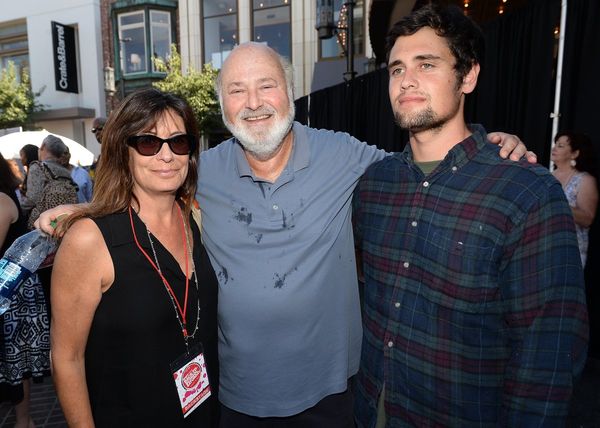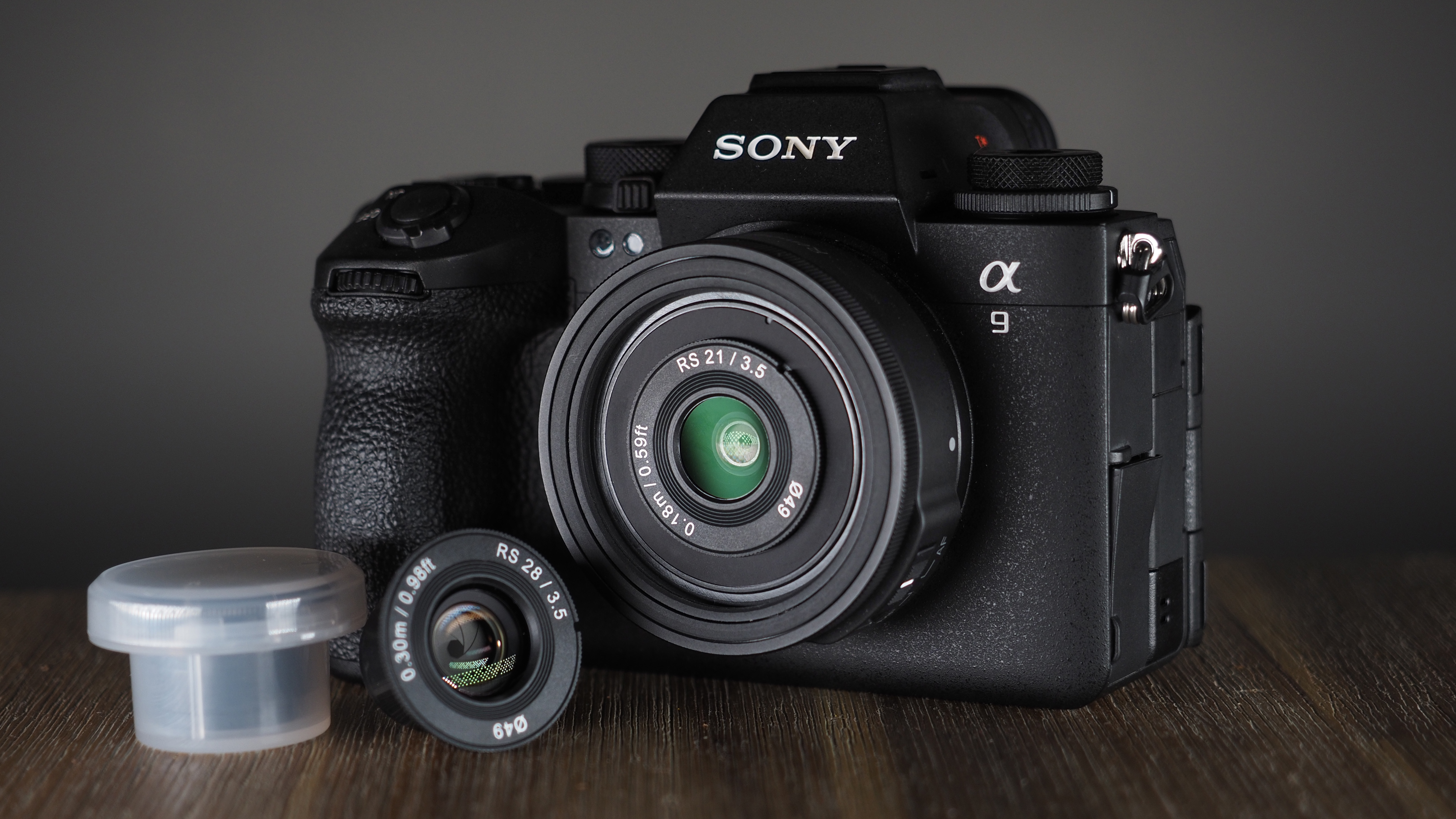
The Samyang Remaster Slim is one of those lenses that needs a little explaining. Indeed, the bit that looks like a lens isn't actually a lens at all; it's a module.
It's into this module that you insert the lens – one of three, tiny, hot-swappable lenses: a 21mm, 28mm or 32mm. So the Samyang Remaster Slim is basically a pancake lens where you can swap the elements, just like Lensbaby lenses enable you to swap the Optics. Only this is incredibly slim. And boasts autofocus. And electronic aperture control.
It's a bit mad, but also a bit brilliant. After all, if you're the sort of person who wants a pancake lens, you're probably the sort of person who wants all your lenses to be small. But rather than make three pancakes, Samyang just made one pancake with three lenses that you can switch out. It's the smallest lens system I've ever seen.
Take a look at my TikTok video below and it'll make sense. And after you've watched it, I'll tell you more about this ingenious little optic…
@digitalcameraworld ♬ sail away (instrumental) - lovelytheband
ABOVE: Watch my video overview of the Samyang Remaster
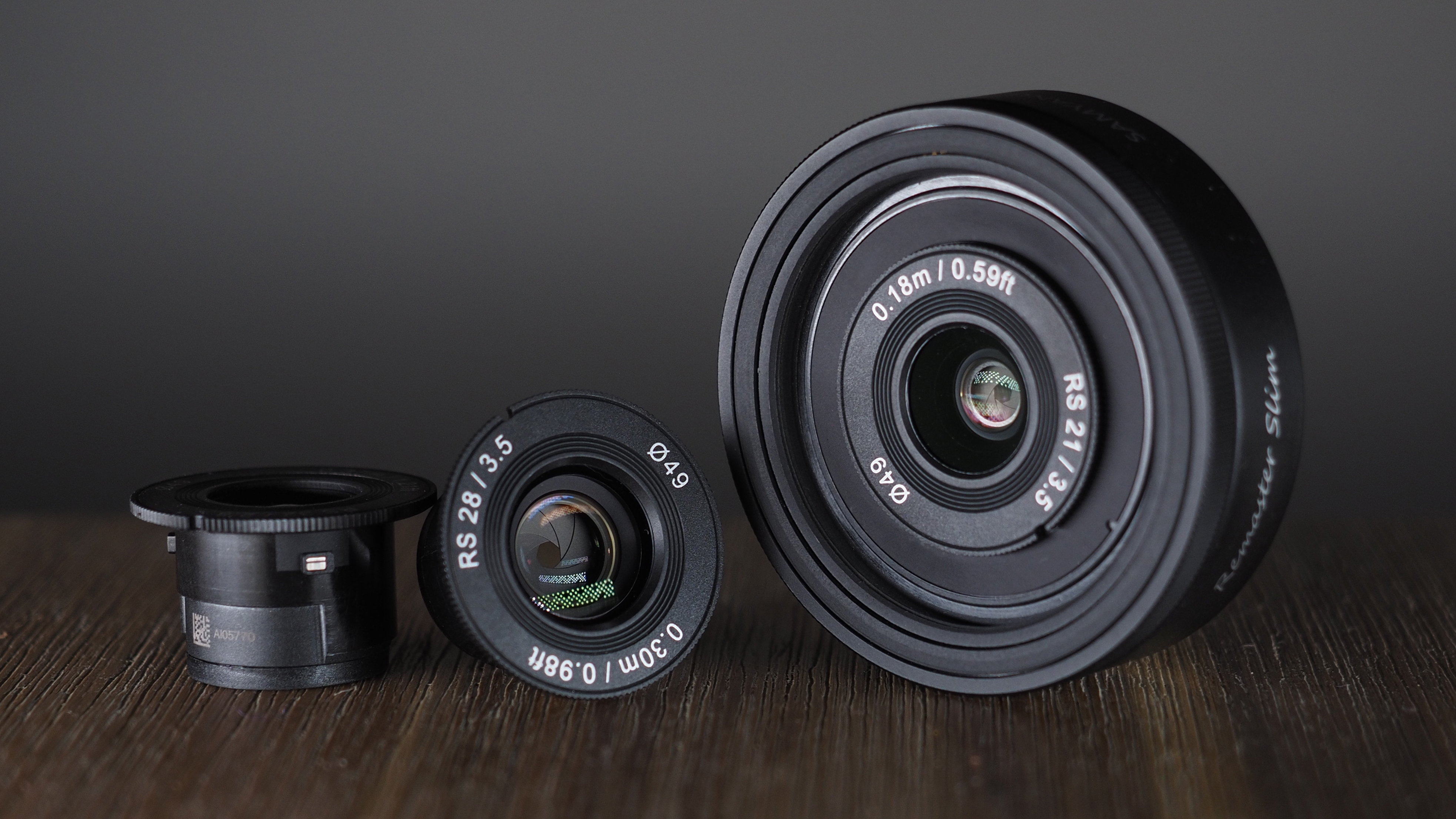
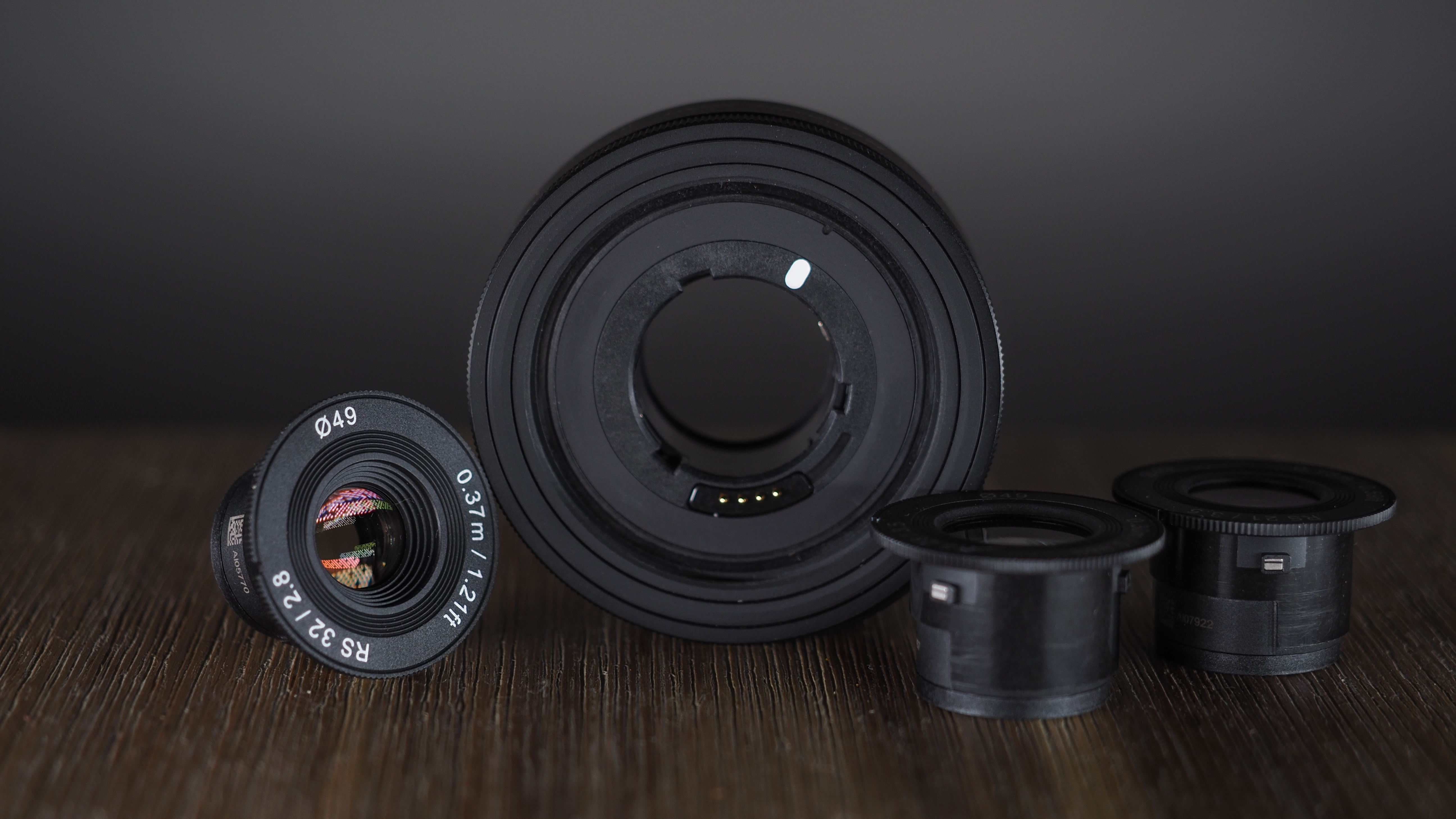
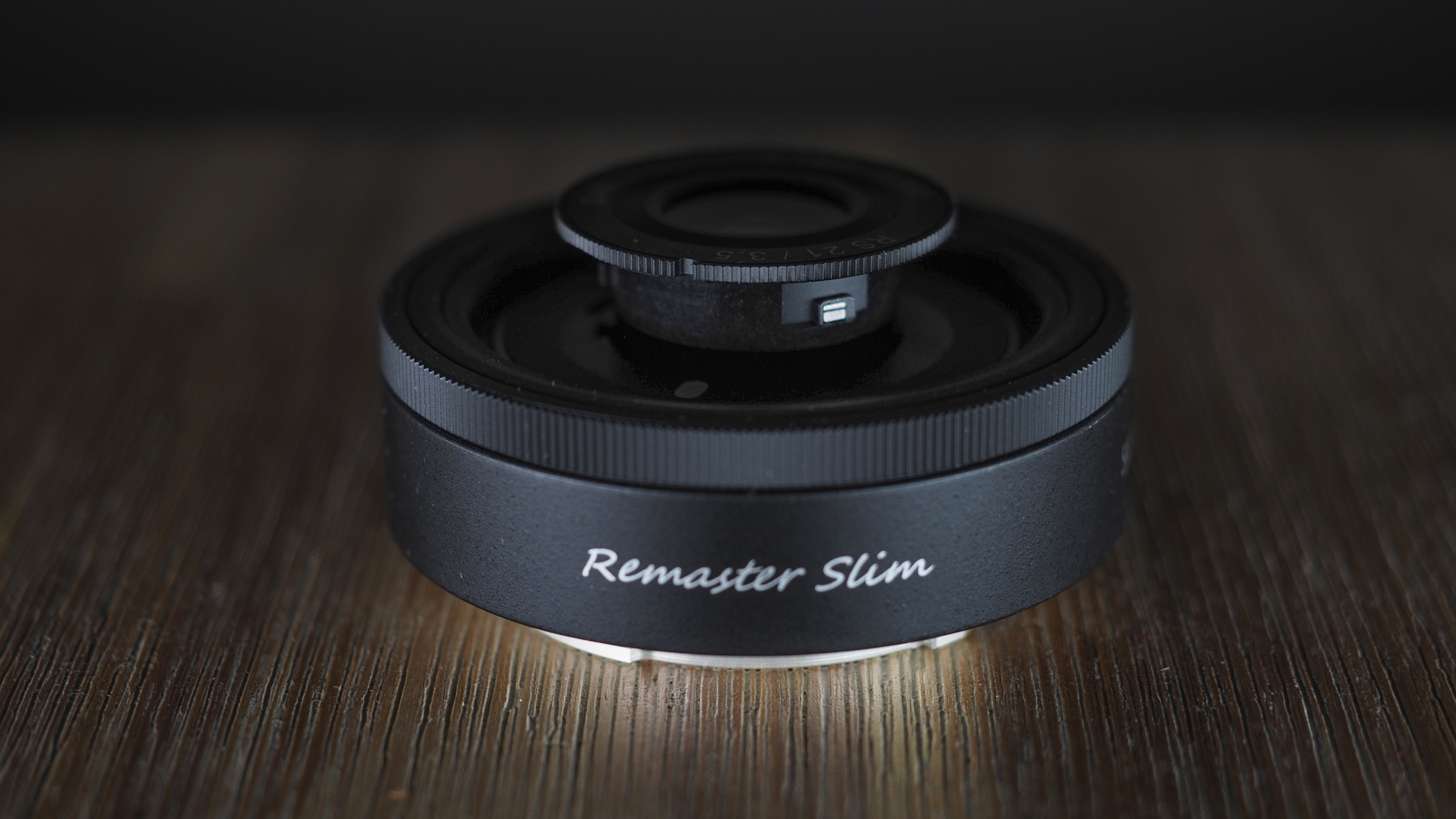
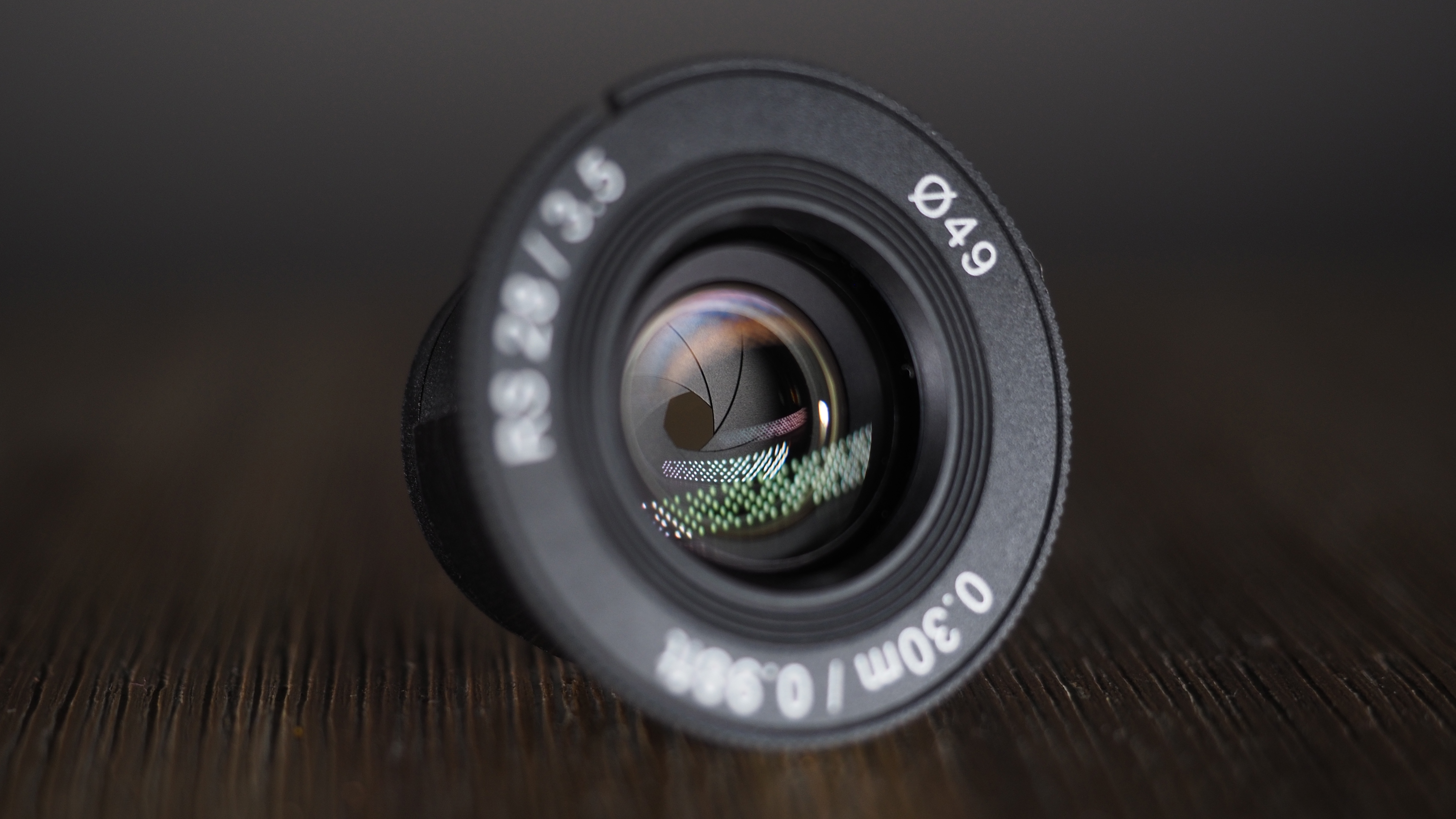
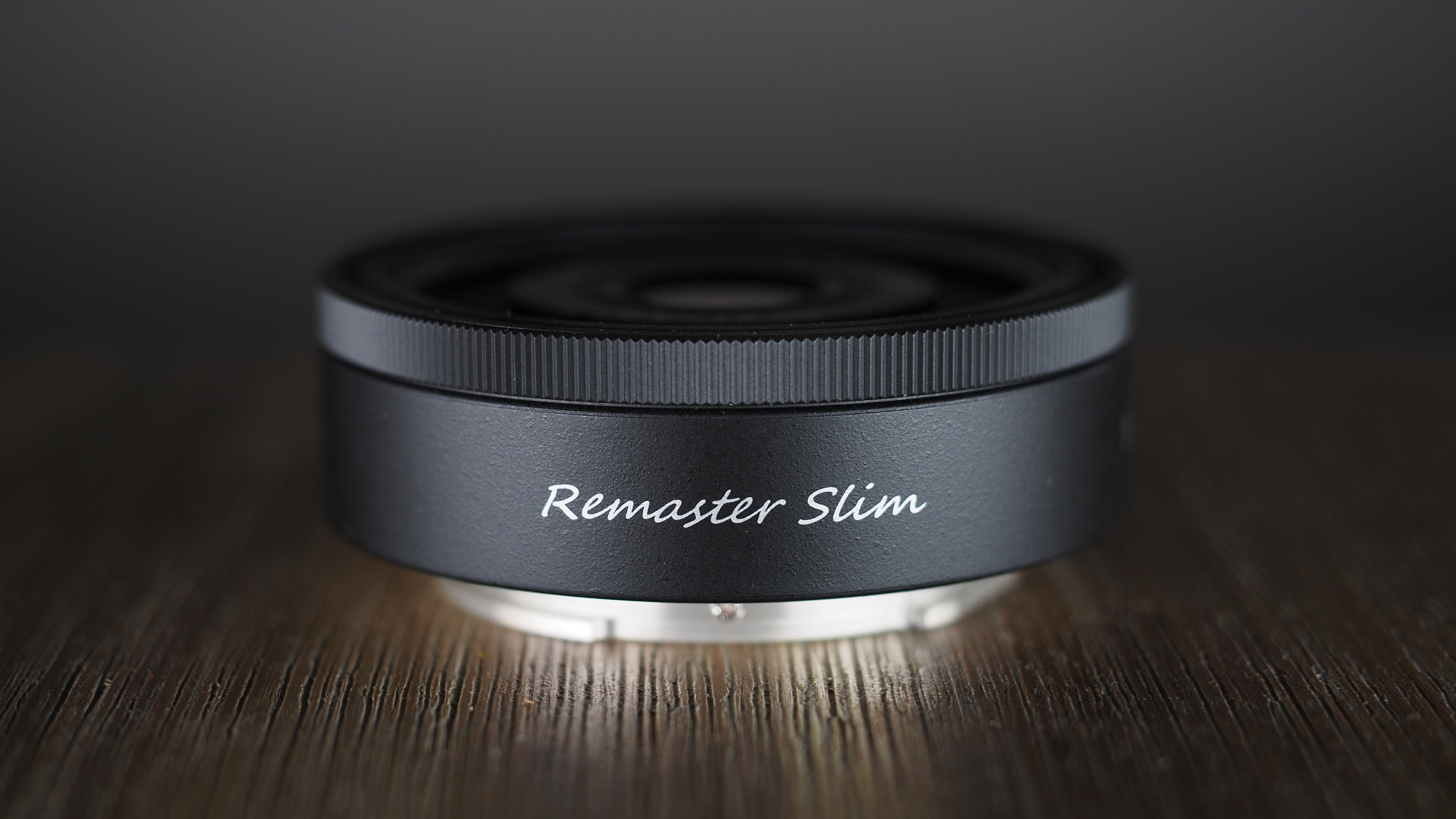
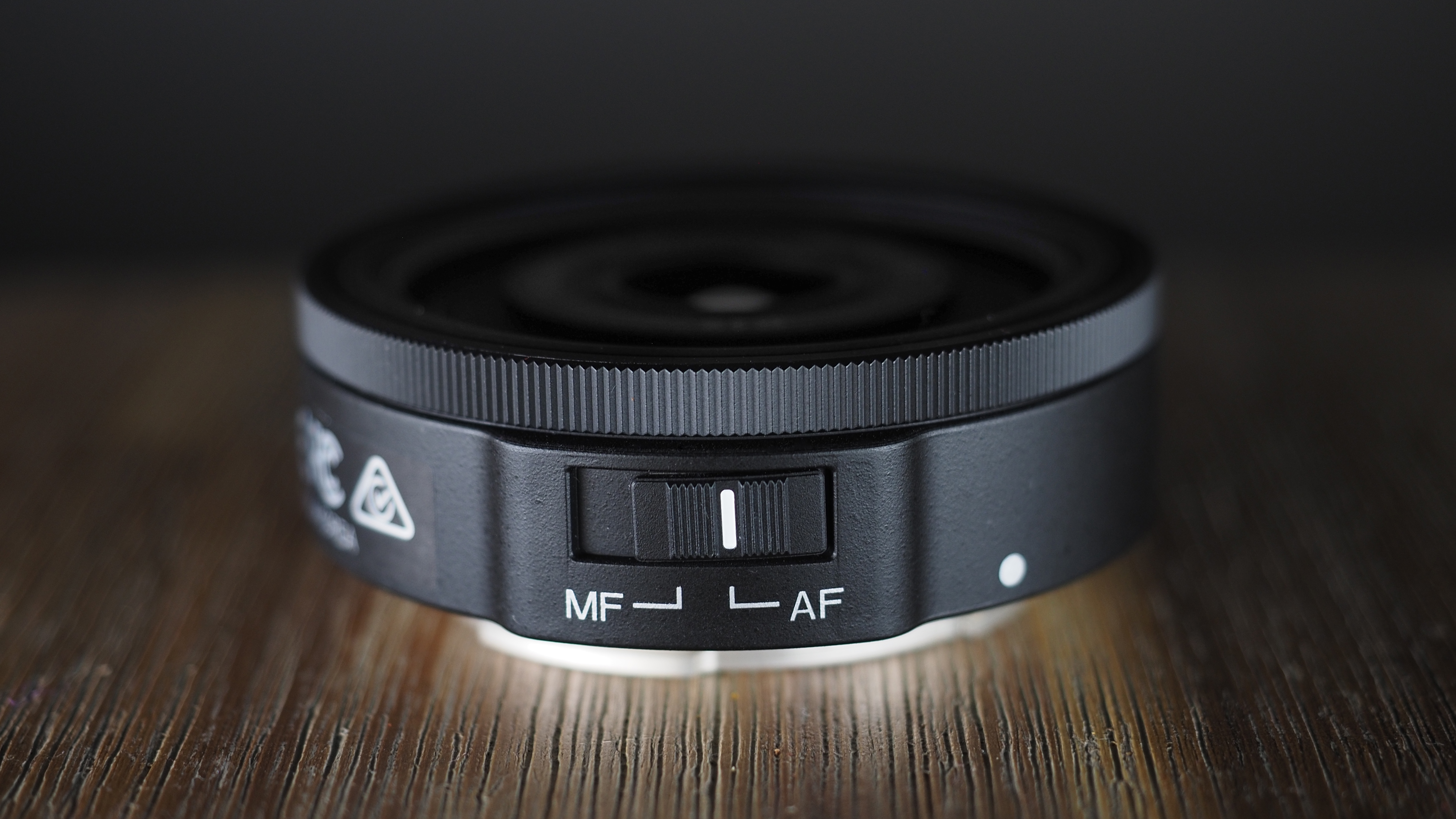
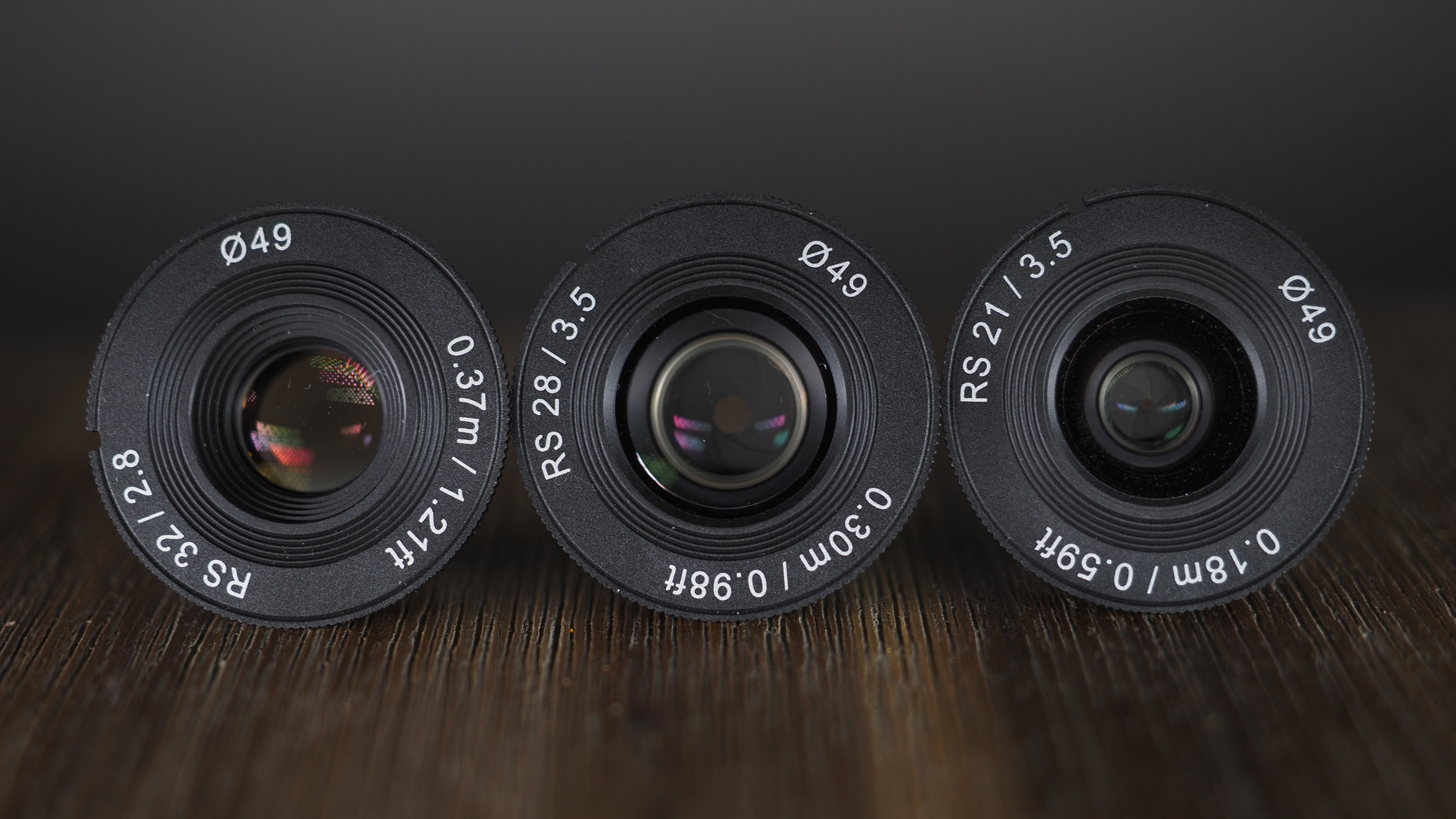
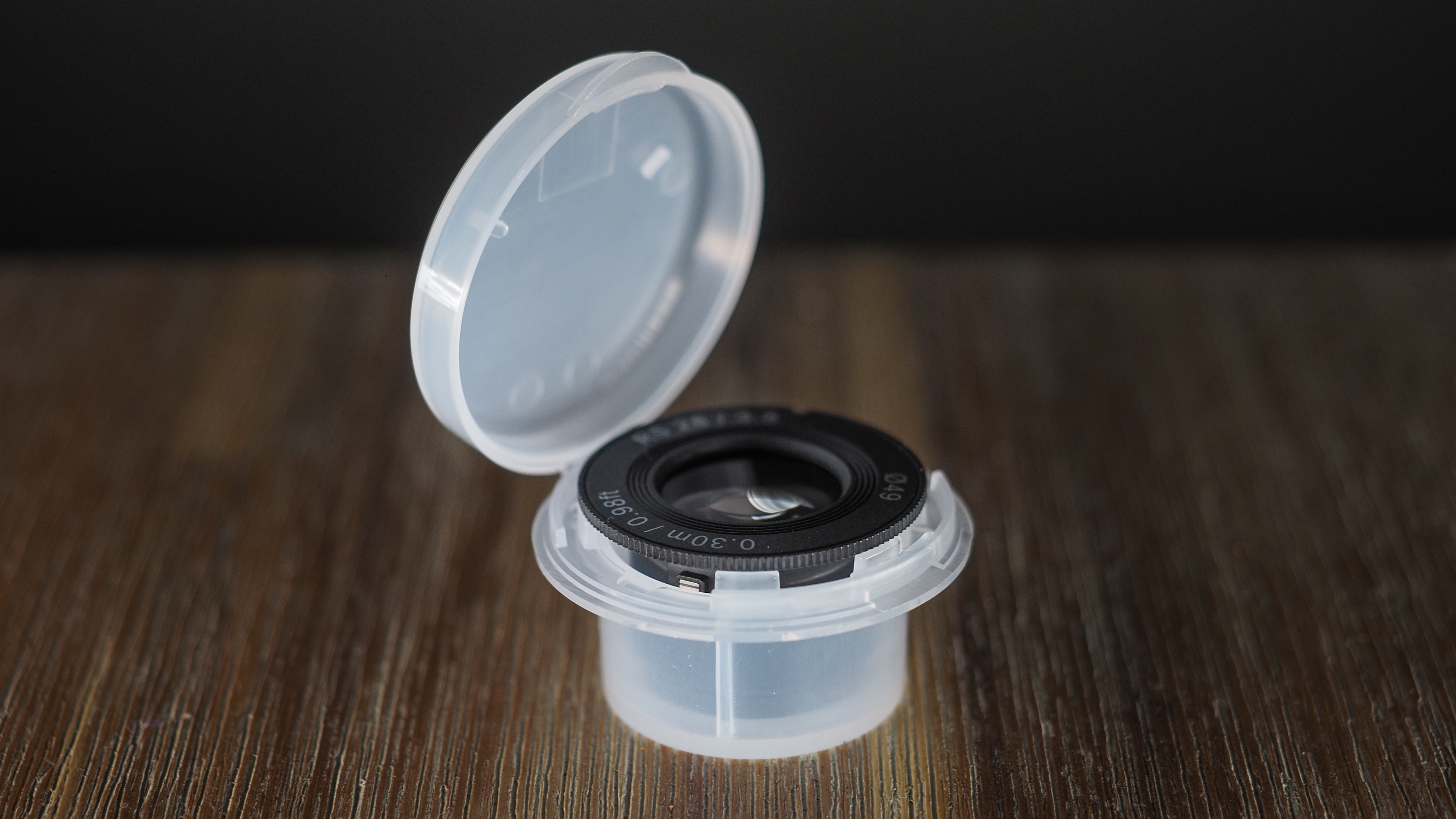
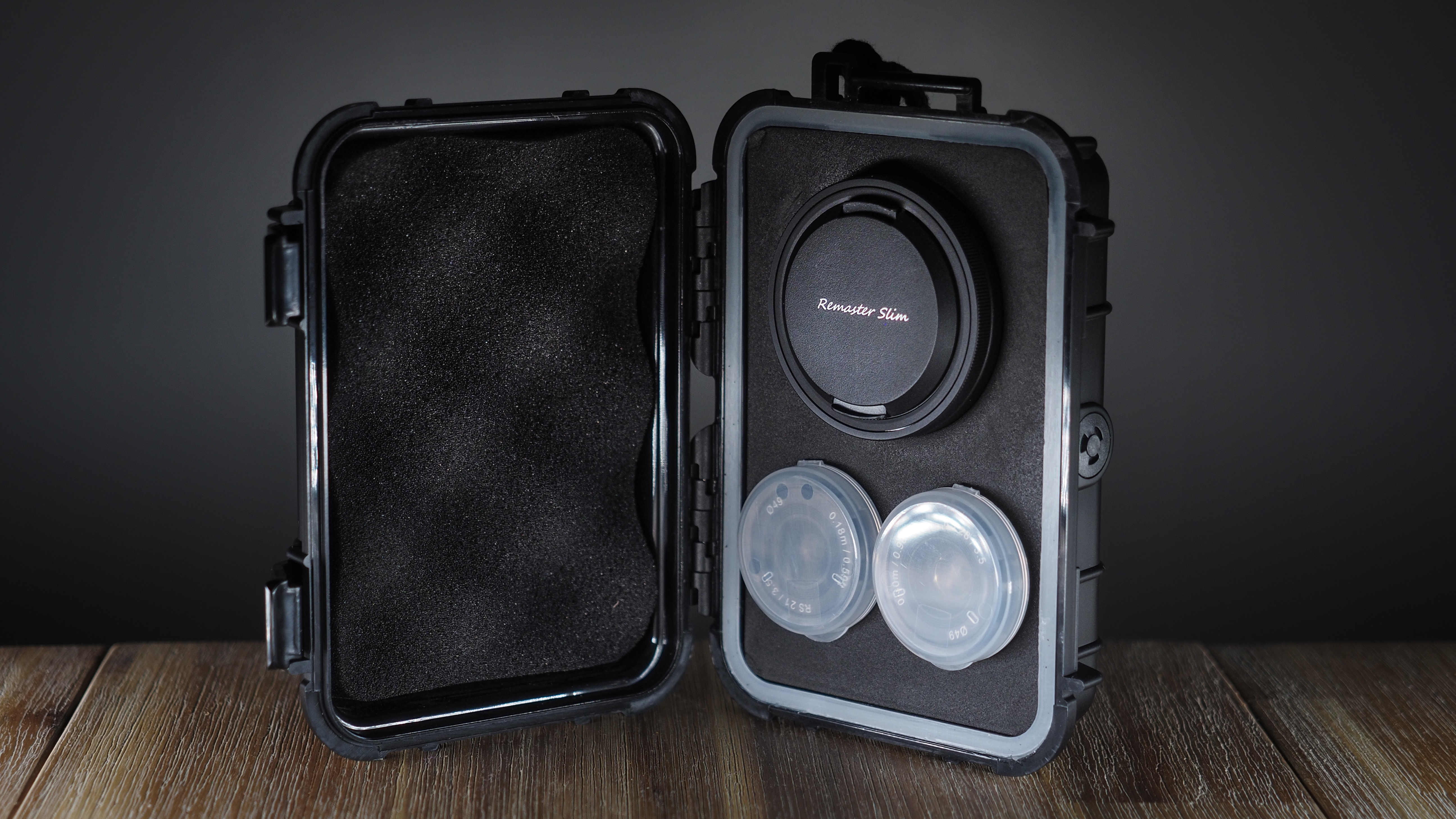
Samyang Remaster Slim: Specifications
Samyang Remaster Slim: Price & availability
The Samyang Remaster Slim has an attractive price tag. In the US it retails for $399, while in the UK its RRP is £335 but it's widely available for £269 – which is absolutely irresistible, considering you effectively get three lenses for that price. (Unfortunately, it doesn't seem to be officially available in Australia right now.)
For comparison, the Sony E 20mm f/2.8 is currently selling for $348 / £265, while the Samyang AF 35mm f/2.8 is going for $250 / £340. Again, that's just for a single focal length – reinforcing what good value the Remaster offers.
Samyang Remaster Slim: Design & handling
While I likened the swappable lenses to Lensbaby Optics, the Samyang Remaster Slim probably has more in common with the old Lomography Neptune. Lomo's "Convertable Art Lens System" employed the same principle: it comprised an adapter that sat in your camera mount, and gave you three different lenses that could be attached to it.
The difference is, the Neptune was massive. And manual focus. And manual aperture. And it was expensive. The Remaster Slim is a teeny tiny pancake lens. And it has autofocus. And the aperture is electronic. And it's incredibly inexpensive.
As you can see in the above TikTok video, at just 19.5mm thick the module keeps your camera loadout as small as possible – with each lens fitting completely inside, rather than sticking out like a lightbulb (as was the case with the Neptune). And to swap a lens, it's a simple case of twisting and pulling to remove and then pushing and twisting to replace.
It takes a little bit of practice to line things up and pop a lens in quickly and cleanly, but you quickly get the hang of it. Just be aware that removing the lens does expose your sensor (as you can see below), so handle with the same care you do when changing regular lenses.

The whole kit comes in a small Pelicase-style box, with an individual mini plastic case for the lenses. So if you have your camera around your neck, you don't even need a camera bag – you can just slip the two extra lenses into your lapel pocket. Heck, you could probably fit one of them in the tiny change pocket on your jeans.
The lens module itself is stacked with features – truly putting some other pancake lenses with fixed focus and fixed apertures to shame. The Remaster Slim has a manual focus ring, which is very skinny but still very usable, along with an MF / AF switch to toggle between manual and autofocus. There's even a filter thread! And a USB-C port!
As with most pancake lenses, you won't really be handling the lens (sorry… module) very much. The manual focus ring does its job perfectly well, but honestly I control everything from the camera whenever I use a pancake so my fingers barely touched the Remaster, save changing the lenses. The main thing is that it's so small and light (just 66.5g, with the 32mm lens) that you forget it's even on your camera.
So, in short, not only is this one of the most ingeniously designed lenses you'll ever see, it's also one of the most fully featured – irrespective of its super-low price or the fact that it's a pancake lens. It's also a pretty sexy-looking thing, sleek and clean and with a funky slim lens cap.
Samyang Remaster Slim: Sample images


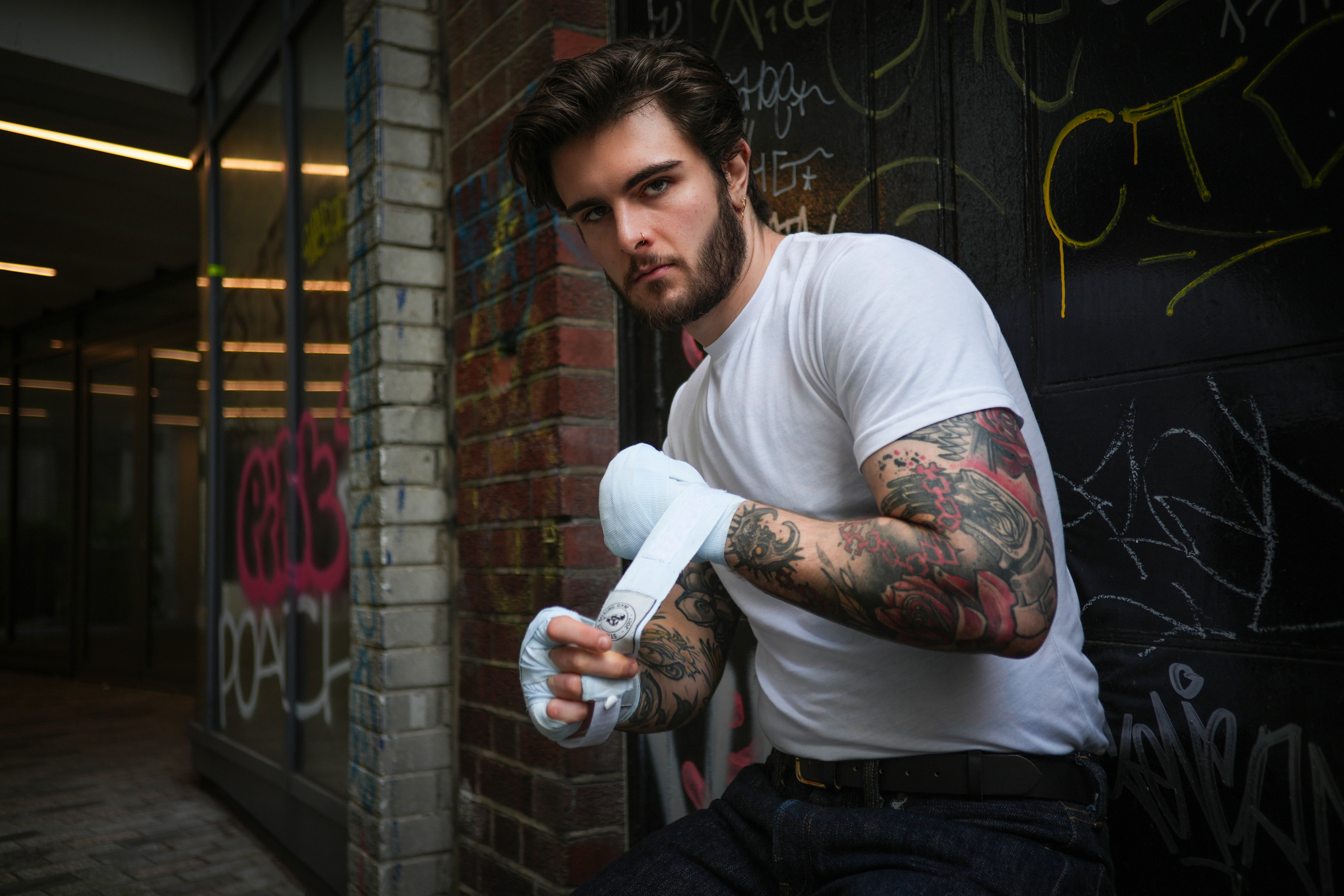

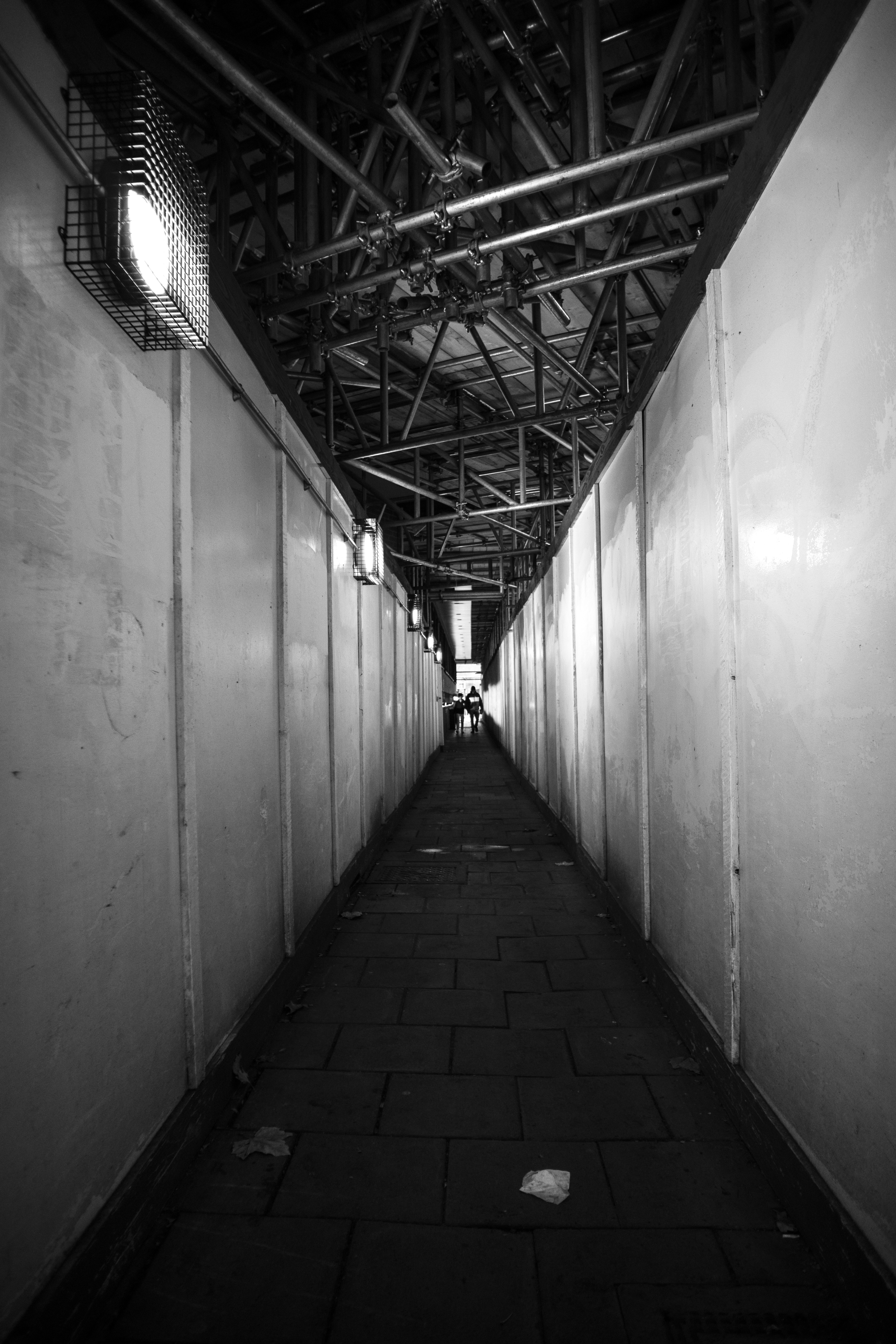
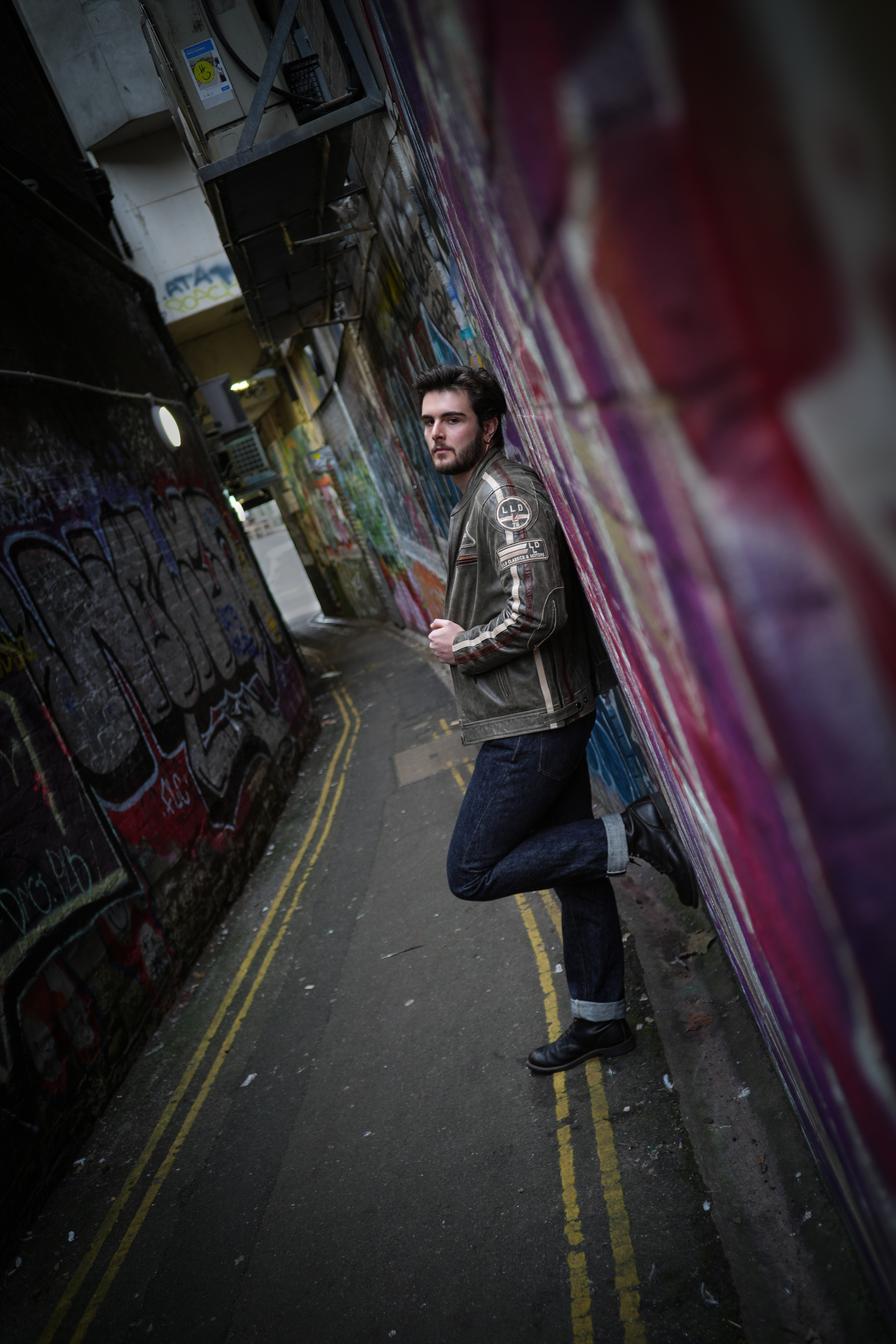
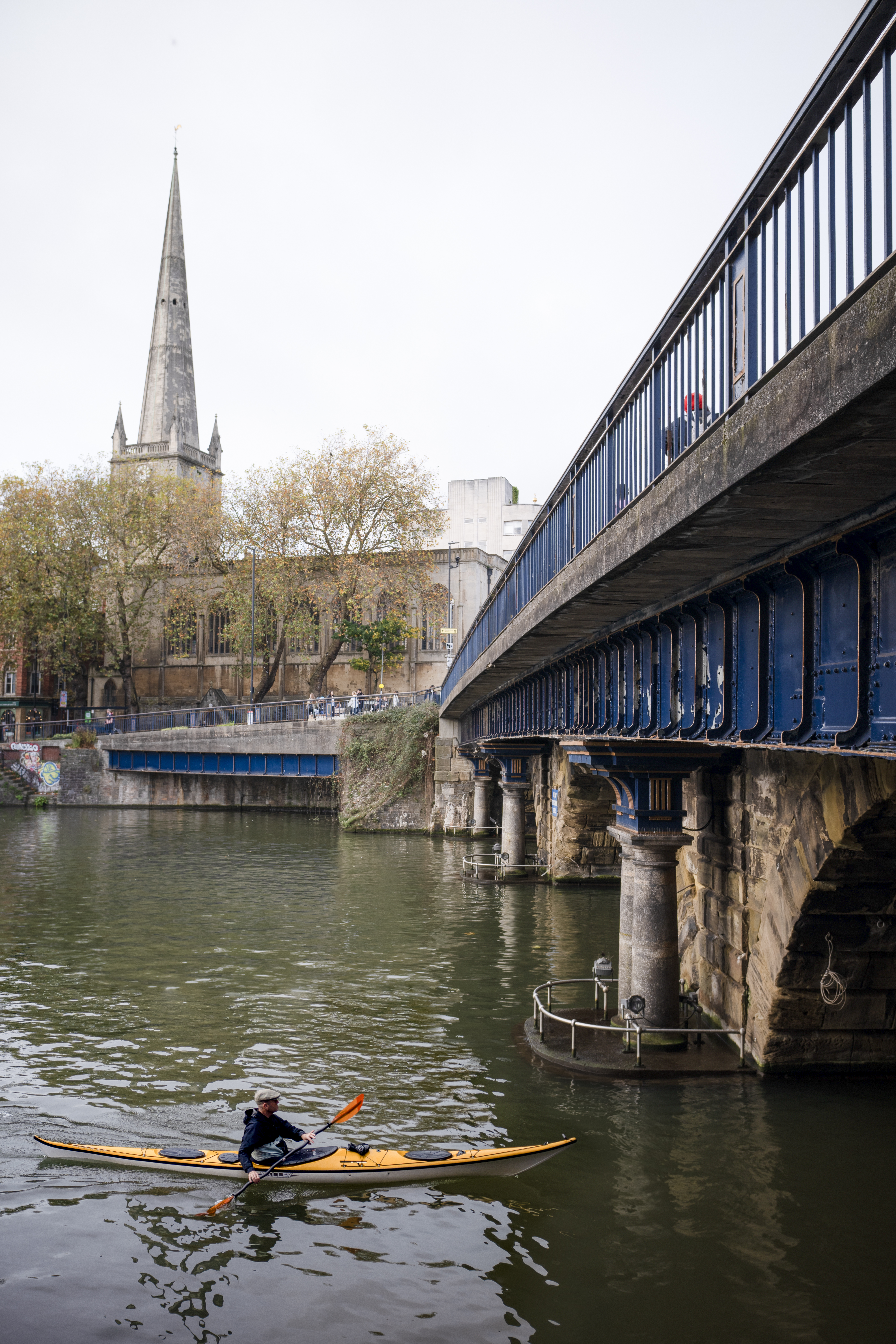

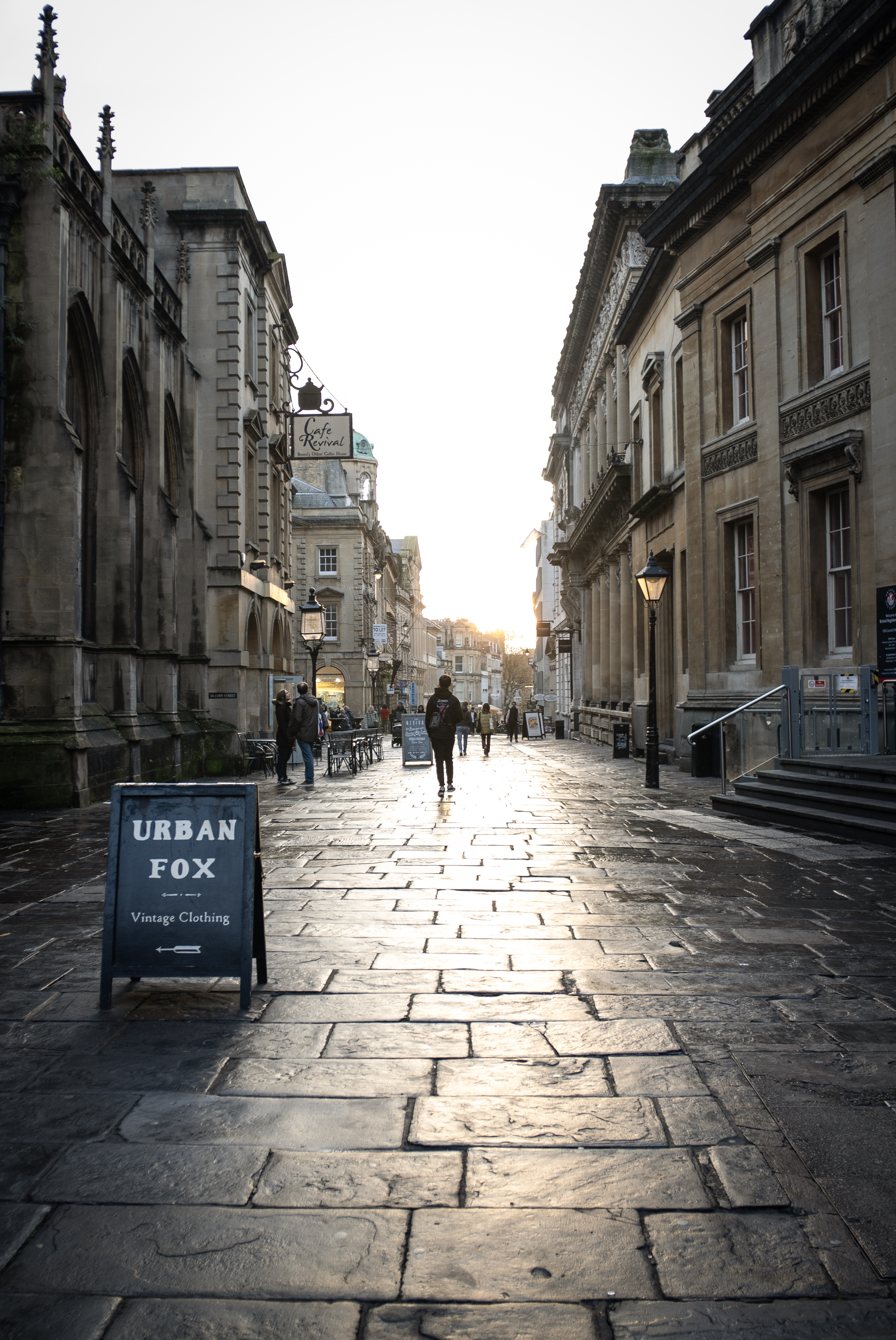
Samyang Remaster Slim: Performance
Samyang has made some great glass, but I must admit some initial fears – I worried that the Remaster Slim would be a neat bit of design, but that the pictures would let everything down. However, I'm very happy to report that this is not the case; despite the lenses being almost impossibly tiny, the performance of all three is really good!
While they're not going to outperform most dedicated 21mm, 28mm and 32mm primes (though they certainly perform better than some that I've used), I would be absolutely happy packing the Remaster Slim and leaving those three primes at home.
I've got no complaints about the sharpness, as all three lenses resolved impressive levels of detail that were perfect for the street and reportage environments in which I tested them. Indeed, I even used the 32mm for a bit of portraiture and was very, very happy with the results.
The 32mm was my favorite lens, and the one that I found the most useful. It helps that I use the 35mm focal length quite a lot in my work, and it's rare that I go as wide as 21mm in regular shooting. But the faster f/2.8 aperture enabled me to create separation in the environmental portraits – and by jumping into APS-C crop mode, I had an effective nifty fifty focal on demand as well.

Autofocus is speedy and snappy. Again, I'm not going to pretend that dedicated primes aren't faster – but nor am I going to pretend that they're faster in any meaningful way. I was using the Samyang Remaster Slim on a Sony A9 III, with one of the most advanced AF systems on the market, and all three lenses had no problem keeping up with it.
Of course, the fact that it has autofocus speaks to the fact that it has electronic contacts – and I love the fact that you get full EXIF data with all your images (which was especially useful when labeling them for this review!). Clicking over to manual, despite being slim the focus ring was still very useable – whether you're pairing it with focus peaking or you want to try zone focusing.
There are a few compromises, though, as you'd expect given the size and design constraints. While the 32mm lens has an f/2.8 aperture, the 21mm and 28mm lenses both top out at f/3.5 – which didn't make a huge amount of difference in practical terms, though when I started to lose the light I certainly would have welcomed a bit more speed.
As you can see in our lab tests below (and in a couple of the sample images), there's quite a bit of distortion on the widest and longest lenses – but nothing a couple of clicks in Photoshop won't fix, and a completely acceptable tradeoff given what the Remaster Slim offers.
Samyang Remaster Slim: Lab tests
We run a range of lab tests under controlled conditions, using the Imatest Master testing suite. Photos of test charts are taken across the range of apertures and zooms (where available), then analyzed for sharpness, distortion and chromatic aberrations.
We use Imatest SFR (spatial frequency response) charts and analysis software to plot lens resolution at the center of the image frame, corners and mid-point distances, across the range of aperture settings and, with zoom lenses, at four different focal lengths. The tests also measure distortion and color fringing (chromatic aberration).
Sharpness:
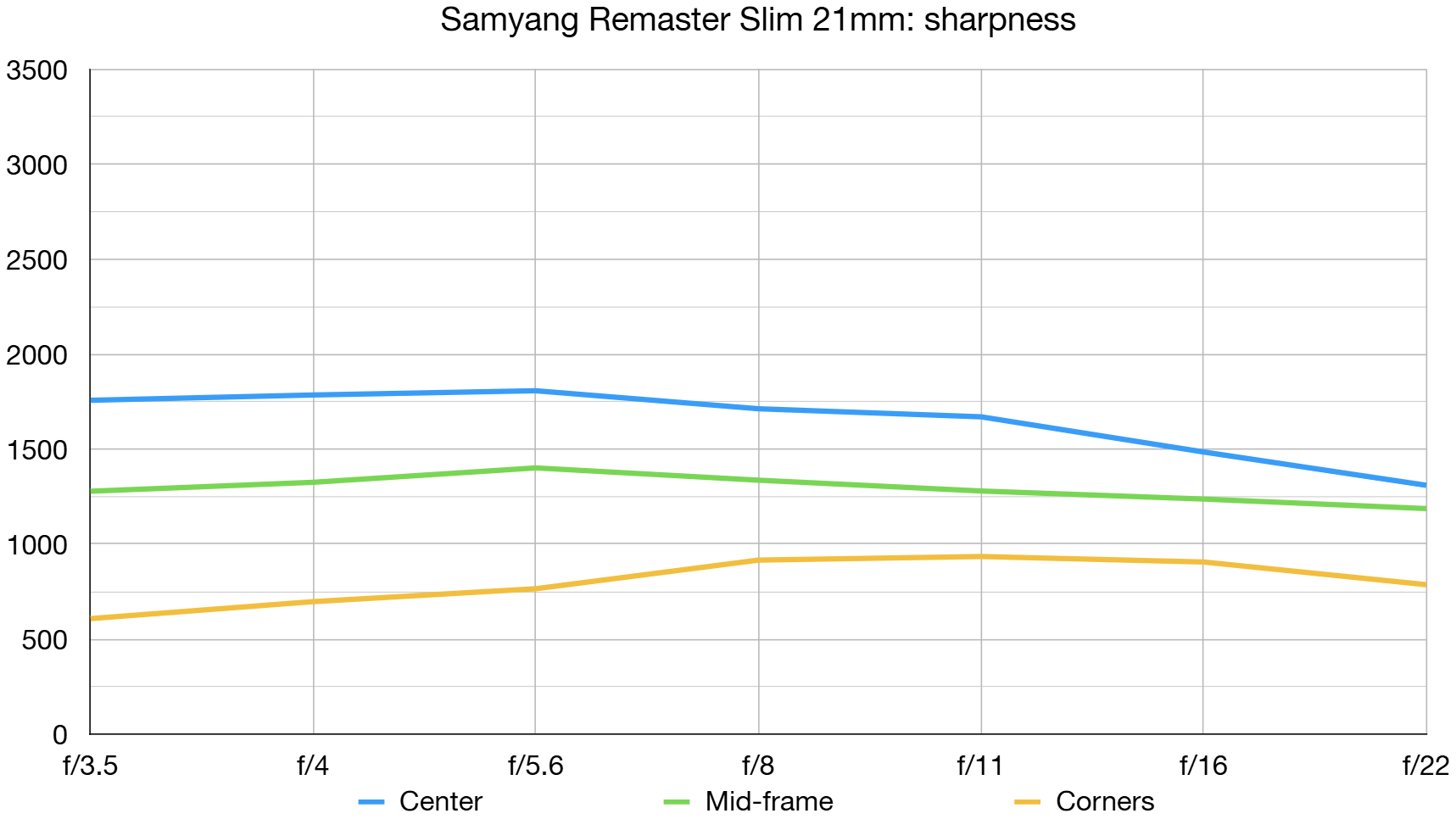
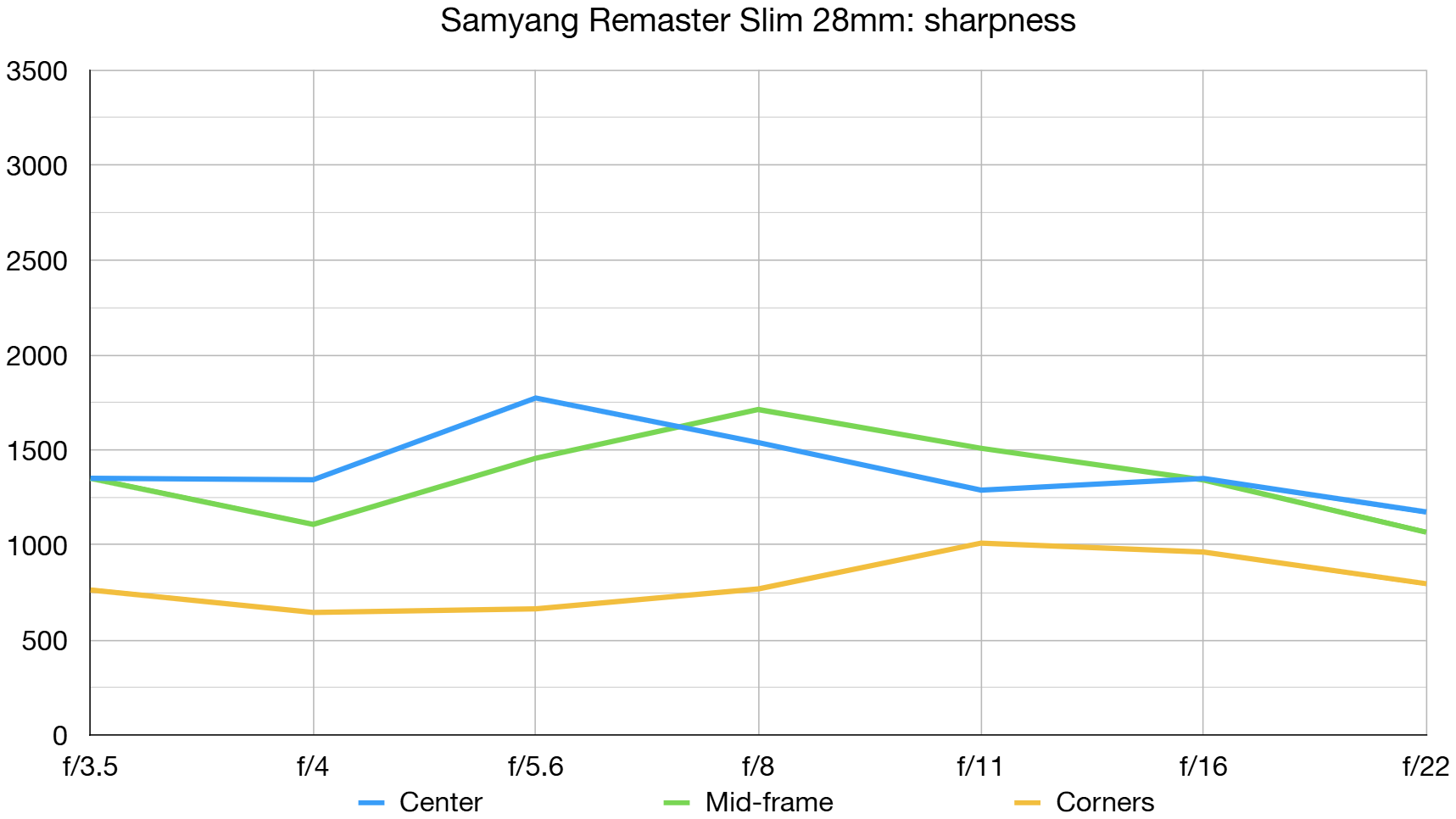
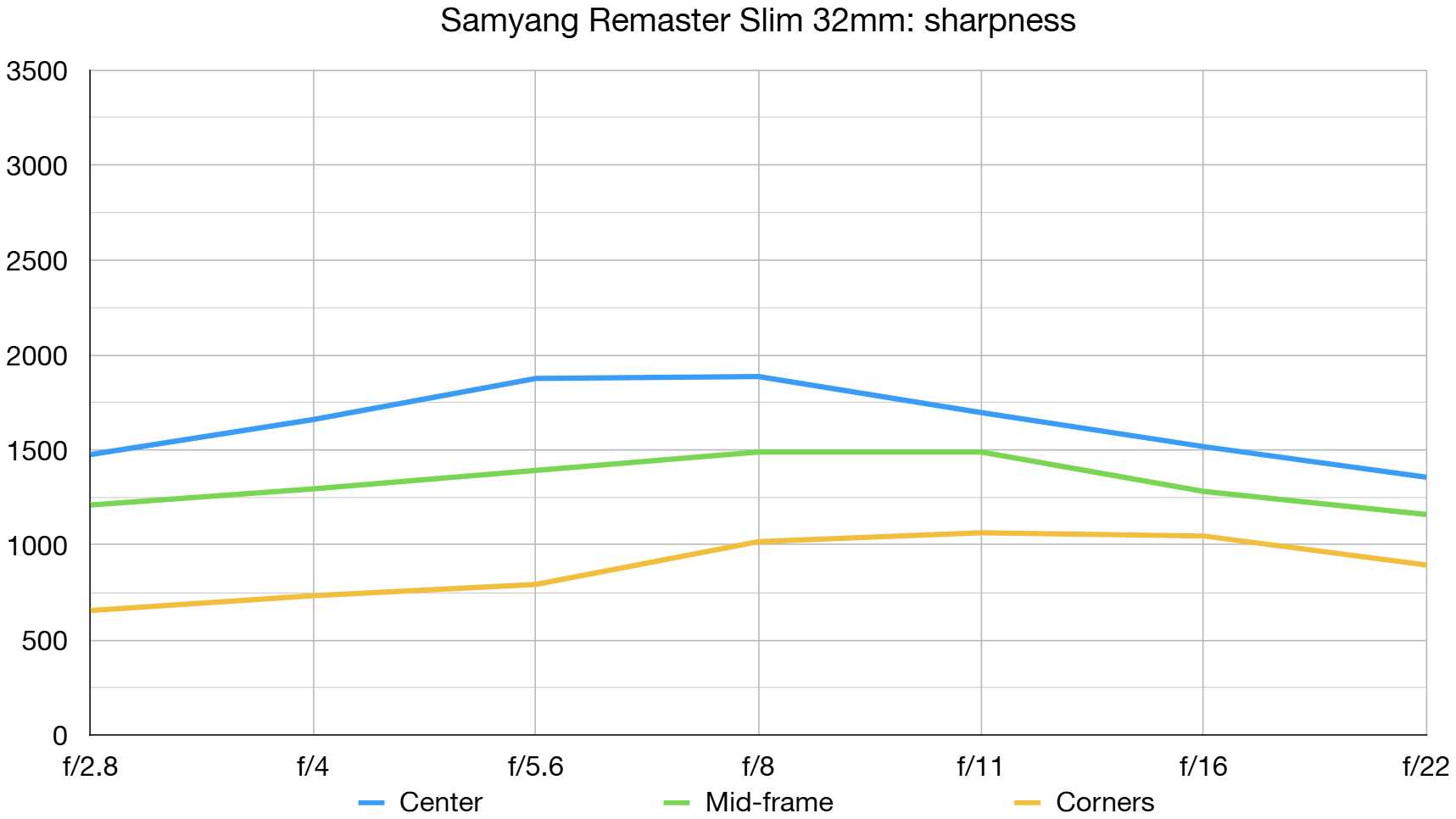
Considering how tiny each lens module is, sharpness scores are pretty good. Center sharpness from the 21mm module is very consistent throughout its aperture range, while the 28mm and 32mm produce their best center sharpness at around f/5.6-f/8. Corner sharpness is relatively disappointing from all three lenses, though it's acceptable if you stop down to f/11.
Fringing:
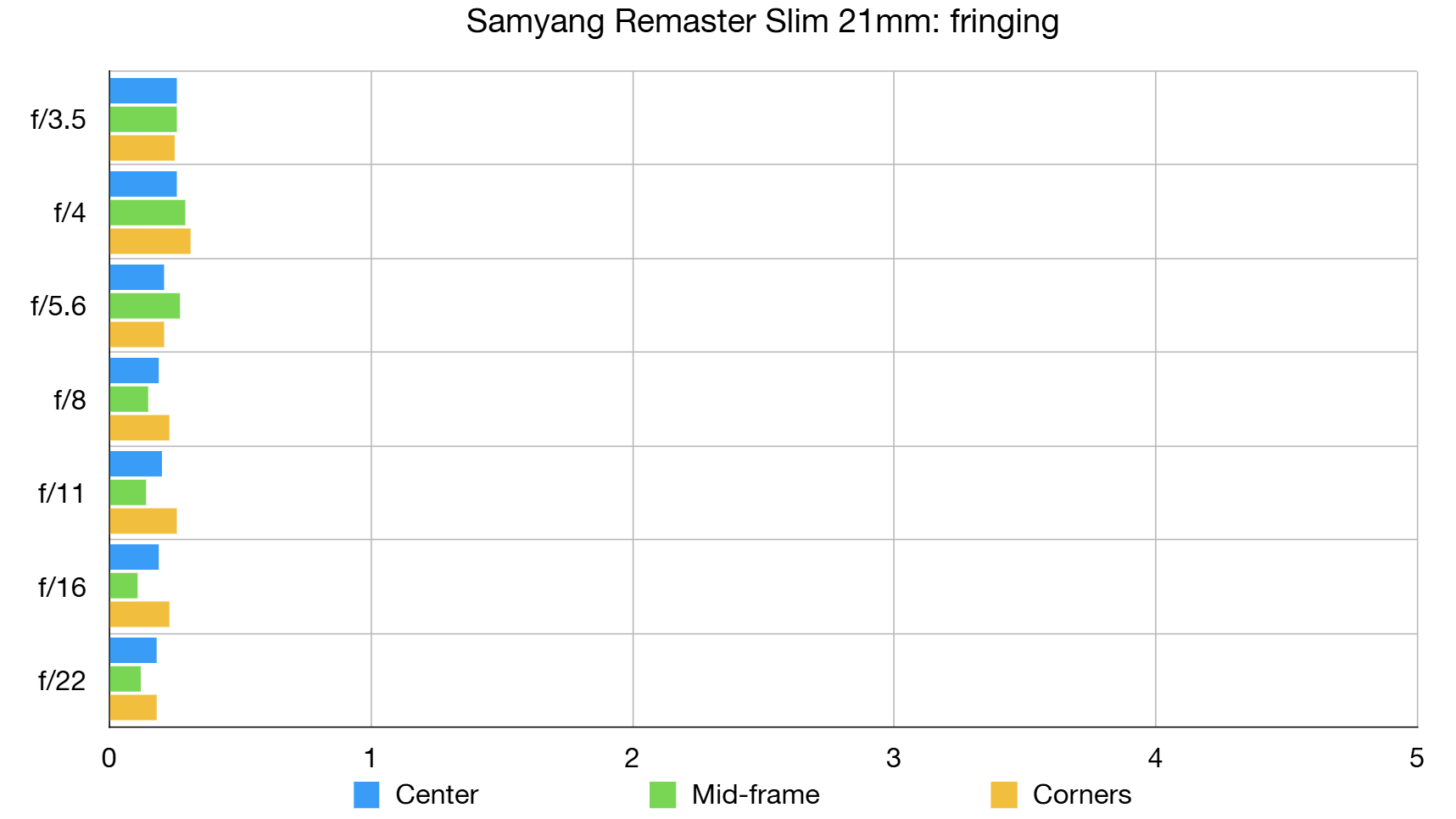
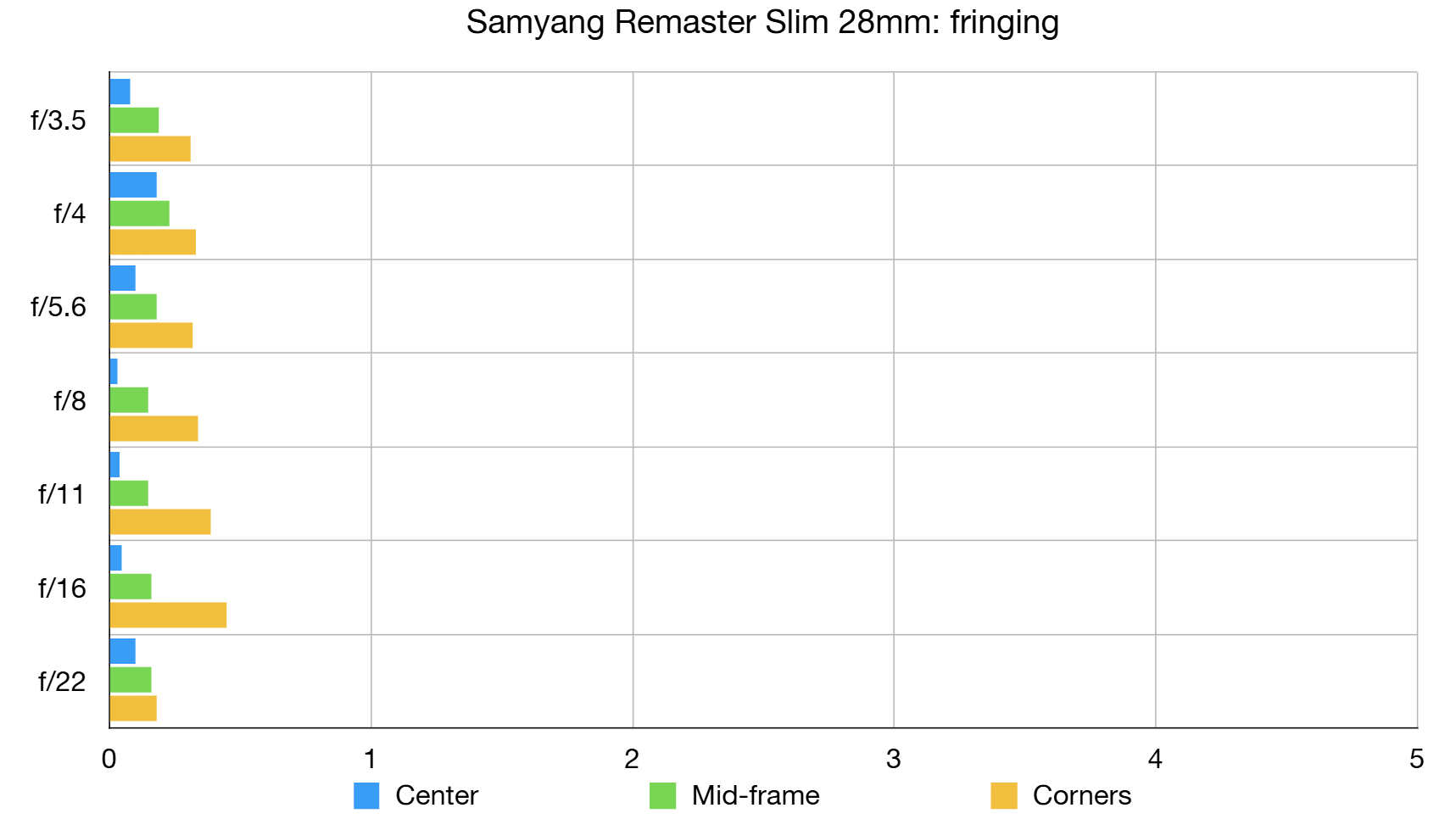
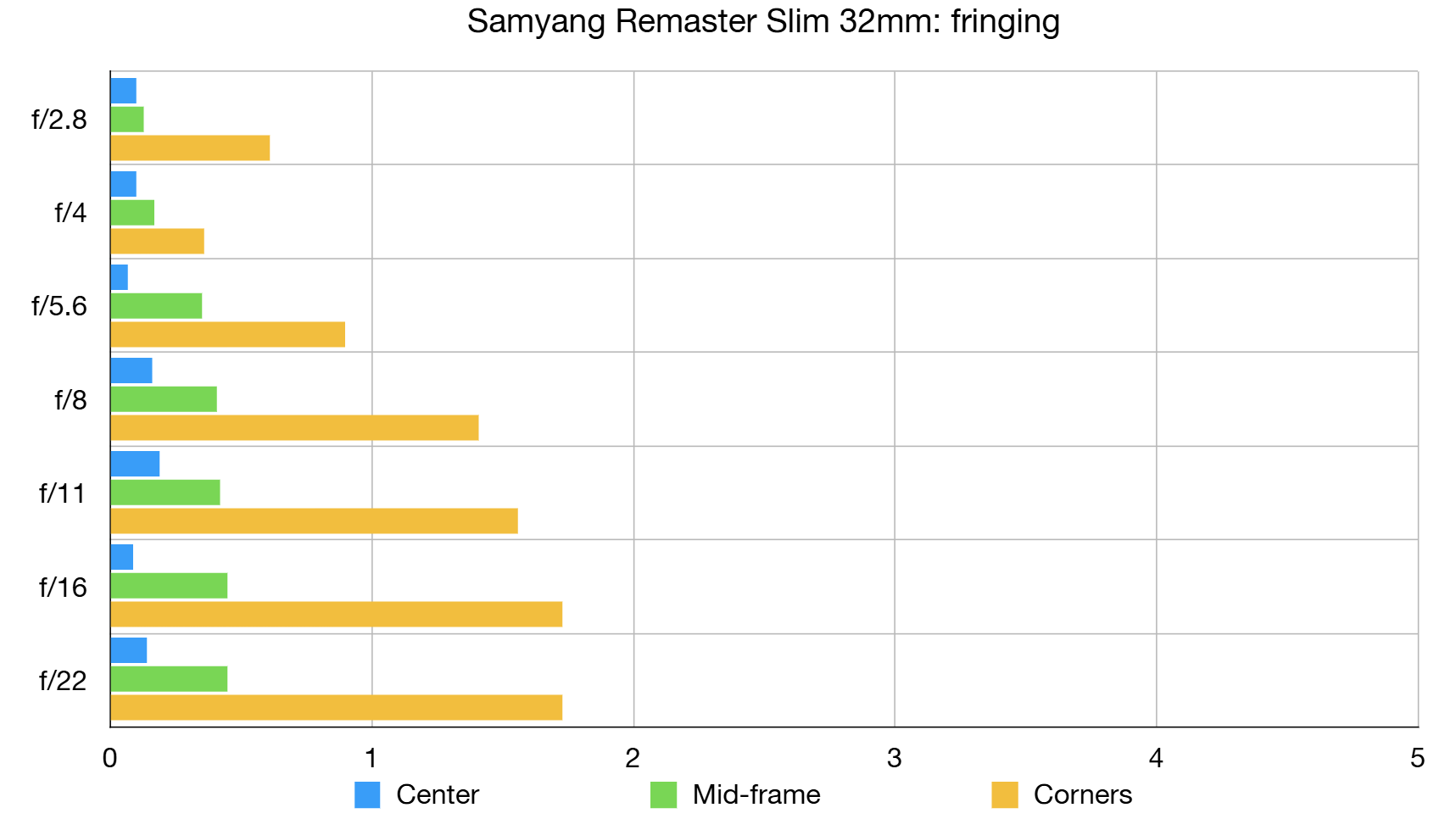
The 21mm and 28mm modules manage exceptionally low levels of color fringing at all apertures. Only the 32mm module produces visible aberrations, though they're not severe.
Distortion:
21mm: -3.98
28mm: -0.53
32mm: 2.23
The 21mm produces pronounced barrel distortion, whereas the 32mm is the opposite, generating moderate pincushion. The 28mm sits, as you'd expect, in the middle, with just a trace of barrel distortion.
Samyang Remaster Slim: Verdict
I had an absolute blast shooting with the Samyang Remaster Slim! It's not often you come across camera kit that's genuinely fun, and truly makes you want to pick up your camera and go out to play. But that's exactly what the Remaster does; it inspires you to create.
On top of that, it's a great little Swiss Army knife for your camera bag, giving you 21mm, 28mm and 32mm focal lengths in a single optic – or, if you're an APS-C user, 31.5mm, 42mm and 48mm focal lengths. If you're someone who shoots wide, you can shed a lot of weight from your camera bag – and potentially even shed the camera bag entirely, if this is the range you work in.
Really, the only criticism I have of the Remaster Slim is the selection of lenses – and it's as much a reflection of my own shooting style as anything else. As someone whose widest everyday prime is a 35mm, the Slim maxes out at the start of my comfort zone. But of course, given that a large swathe of E-mount users are APS-C, many folks will effectively be using longer focal lengths.

Still, I actually found that to be part of the fun; not only did this setup inspire me to get out and shoot, it challenged me as well. And while I would have loved some longer lens options, I've no doubt that achieving them will be very difficult in optics this small. All that said, I think that the 28mm lens is a bit of an odd man out; for me it was a bit too close to the 32mm, and I would have got more use out of something like a 16mm instead.
TLDR, this is a truly brilliant little lens. It's an instant conversation starter, and for good reason: it succeeds as a pancake lens, as an optical Swiss Army knife, as a do-it-all wide-angle for full frame users and as arguably the perfect street photography and travel companion for APS-C shooters.
It's also incredible value. It's a bit pricier in the States, at $400, but right now in the UK it's available for under £270 – making it an absolutely essential purchase. My one regret is that it's only available for E-Mount – I would kill to have this on RF. Come on, Canon… unlock those doors!




